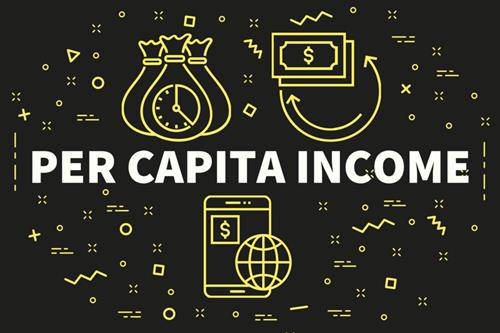
PUMPA - SMART LEARNING
எங்கள் ஆசிரியர்களுடன் 1-ஆன்-1 ஆலோசனை நேரத்தைப் பெறுங்கள். டாப்பர் ஆவதற்கு நாங்கள் பயிற்சி அளிப்போம்
Book Free DemoThe major indicators to measure the level of economic development are Net National Product (NNP), Per Capita Income (PCI), Purchasing Power Parity (PPP) and Human Development Index (HDI).
Net National Product:
The Net National Product (NNP) is considered an accurate measure of national output. It is also known as national income.
A rise in per capita income means an increase in aggregate real output.
To measure a country's development, its income is considered one of the most critical factors. Countries with higher income are considered to be more developed than those with lesser income. So, the income itself is considered to be one of the indicators of economic development.
Per Capita Income
In today's world, countries have different populations; comparing total income will not be indicative of what an average person is likely to earn, as people in one country are better off than other countries.
The average income is calculated by dividing the country's total income by its total population. The average income is also called as per capita income. Calculations of the per capita income of all countries are calculated only in the US dollar to compare it to the International level.

Per Capita Income
According to the World Bank report, new income measurements of countries are classified as below (2017–18)
According to the World Bank report, new income measurements of countries are classified as below (2017–18)
Types of Countries - Per Capita Income (US Dollar)
1 Low Income < 1005
2 Lower Middle Income - 1006–3955
3 Upper Middle Income - 3956–12,235
4 High Income > 12,235
1 Low Income < 1005
2 Lower Middle Income - 1006–3955
3 Upper Middle Income - 3956–12,235
4 High Income > 12,235
Purchasing Power Parity:
Purchasing power parity is defined as the number of units of a country's currency required to buy the same amount of goods and services in the domestic market as one dollar would buy in the US.
Recently, India became the third-largest economy in terms of PPP. China became the largest defeating the US to the second position.
Human Development:
Human resource is necessary for the progress of any country. Human resources refer to people's collective abilities, which can be utilised in the production sector.
Human resource development means developing a person's physical and mental abilities through education, health care and training.
For example, suppose a child is invested with good education and health. In that case, they may turn to be very productive in future in the form of higher earnings and greater contribution to society. Human Development Index (HDI) indicates the all round development of the people in the society.
Important!
The Ministry of Human Resource Development is responsible for the development of human resources in India. Its headquarters is situated at Shastri Bhavan in New Delhi.
HDI emphasises that people and their capabilities should be the ultimate criteria for assessing the development of a country, not economic growth alone.
Important!
Fact: The literacy rate of Tamil Nadu is the second-highest among the southern states. Tamil Nadu's literacy rate is higher than the national average. The enrolment rate for higher education in Tamil Nadu is the highest in India.

The Human Development Index (HDI) is measured based on three basic dimensions:
- Life expectancy at birth
- Average education levels
- A decent standard of living